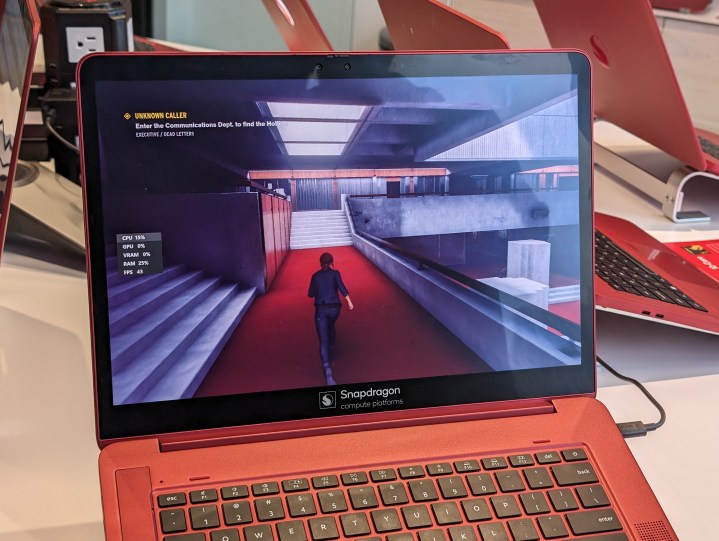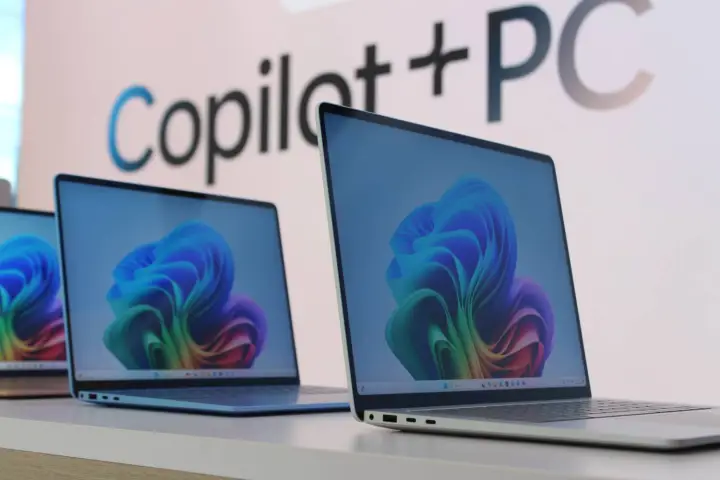
The day is finally here. Copilot+ laptops are available for sale, and we already have a handful of reviews making the rounds. The devices, packing the new Snapdragon X Elite chip, have been described as “amazing” and a turning point for Windows laptops. Once you step outside the bounds of the Qualcomm chip, however, Copilot+ PCs are “not usable.”
Those are the words Dave2D used to describe playing Overwatch 2 on the Asus Vivobook S 15, which is the only device we’ve seen reviews on so far. He’s not alone in that sentiment, and after digging through a few reviews, Dave2D’s video is easily the most favorable. Despite that, all of the reviews I’ve seen so far agree that gaming — and emulation as a whole — on the Snapdragon X Elite just doesn’t make the cut.
It’s a bit shocking considering gaming was such a key highlight of Qualcomm’s new chips. Make no mistake, these aren’t gaming laptops, but the promise of playable performance on the go was enticing. Even by that standard, Copilot+ laptops struggle. “If it’s been compiled for ARM, the experience is great,” Matthew Moniz said in his video review. “But the moment you move over to an x86 app, depending on how demanding it is, that’s when things start to change.”
Emulation challenges

Let’s back up for just a moment. The Snapdragon X Elite uses the Arm instruction set architecture (ISA), while the vast majority of Windows apps are written for the x86 ISA. When an x86 app sends instructions to the Snapdragon X Elite, it doesn’t know what to do with them. Those x86 instructions aren’t in its playbook of Arm instructions. To solve this problem, Microsoft developed Prism, which translates those x86 instructions to Arm instructions. There’s always a bit of overhead with translating instructions like this, but the promise was that there wouldn’t be a massive hit to performance.
Dave2D says that Prism works well, at least for some apps. Talking about Premiere Pro, the YouTuber said: “Even in emulation mode, and this is the thing that blew me away, [Premiere Pro] is completely usable.”
Other reviews weren’t as positive. TechTablets showed that the Snapdragon X Elite took more than twice as long to encode a video from Premiere Pro as Intel’s recent Meteor Lake CPUs. Matthew Moniz agreed, saying: “I was playing with Adobe Premiere Pro. Like, I could totally load it up, use it, and make a couple of edits. The experience wasn’t superfast, and it really got bogged down when it came to any sort of GPU-based effects.”
Premiere Pro doesn’t have a native ARM version yet, but Moniz also tried DaVinci Resolve, which does have a native ARM version. Although the YouTuber said timeline performance was much better than Premiere, the issues with GPU-based effects still presented themselves.
And that’s one area where all three of these reviews agree: the GPU in the Snapdragon X Elite struggles, and games show that off in a big way.
A gaming flop
Gaming hits Copilot+ PCs hard according to this first batch of reviews. How hard? Well, Moniz says that “you’re losing a lot of performance, like, 50% of performance.” TechTablets agreed and showcased The Witcher 3 struggling to run on the Vivobook S 15 with constant stuttering. “It’s clear to me, this should be doing at least twice the frame rate,” the YouTuber said. And, of course, Dave2D described the chip as “not usable” when talking about playing Overwatch 2 competitively.
It looks like there are two factors at play. One is the weaker GPU, which showed up in Premiere Pro and DaVinci Resolve, but also the Prism translation. Stuttering was a common theme, from The Witcher 3 to Overwatch 2 to Balder’s Gate 3, but some of the problems go much deeper.
Moniz pointed to Diablo IV, saying it would crash with a Prism error, and that Fortnite wouldn’t load at all. There were also some strange limitations. Moniz discovered that players are forced to run in Windowed mode in Overwatch 2, and that the resolution was capped at 1,200 x 800. Even in Dirt 5, which is supposedly optimized for Arm, the YouTuber said he only achieved 19 frames per second (fps).

What’s concerning is that most of these games should work. Microsoft supports a database of games that should work on Arm. Overwatch 2 has a “Perfect” rating, while Diablo IV achieved the “Runs” status. The Witcher 3 is considered “Playable.” Based on this first batch of reviews, none of these games seem playable due to crashing, low performance, and stutters.
The bigger issue is compatibility overall, however. The big apps like Premiere Pro should work, but Moniz pointed to smaller apps that might not. The YouTuber brought up examples like an audio interface, or some other external accessory that requires its own app. “It might work, it might not,” he said. That’s a big gamble if you have additional hardware you need to plug into your PC.
Still a bright future

Although graphics performance is disappointing, the main draw of Copilot+ laptops holds up. All three YouTubers showed benchmarks of the Snapdragon X Elite not only matching the competition from AMD and Intel, but often exceeding it. Moniz particularly highlighted performance away from the charger. Most Windows
Battery life holds up as well. Although none of the reviews I looked at said the chip can outpace a MacBook Pro, all of them showed battery life much closer to Apple than any of the x86 competition. “In my usage of the laptop, this thing lasts and lasts,” Zac Bowden of Windows Central wrote.
There are some stumbles out of the gate, but Copilot+ laptops are still off to a strong start. Dave2D summed up his experience by saying: “The Snapdragon X Elite chip really defines what the Windows laptop experience can be.” It’s not perfect, mind you, but it seems we’re on the cusp of the Windows on Arm future that we’ve heard about for years.
It’s also important to note that this is the floor for the Snapdragon X Elite. As Prism gets updates and more developers shift over to Arm the experience will improve. What’s important here is that Qualcomm managed to nail CPU performance and offer big improvements to battery life. Elsewhere, the improvements can come through software.
Now, you likely noticed that I haven’t mentioned AI once in all of this talk about Copilot+ laptops, which is a bit strange given how big of a feature AI is for these devices. Reviews didn’t touch much on AI, either. The defining AI feature of Copilot+, Recall, has been delayed. You can buy a Copilot+ laptop now, but you’ll have to wait for Microsoft to release its AI software.


